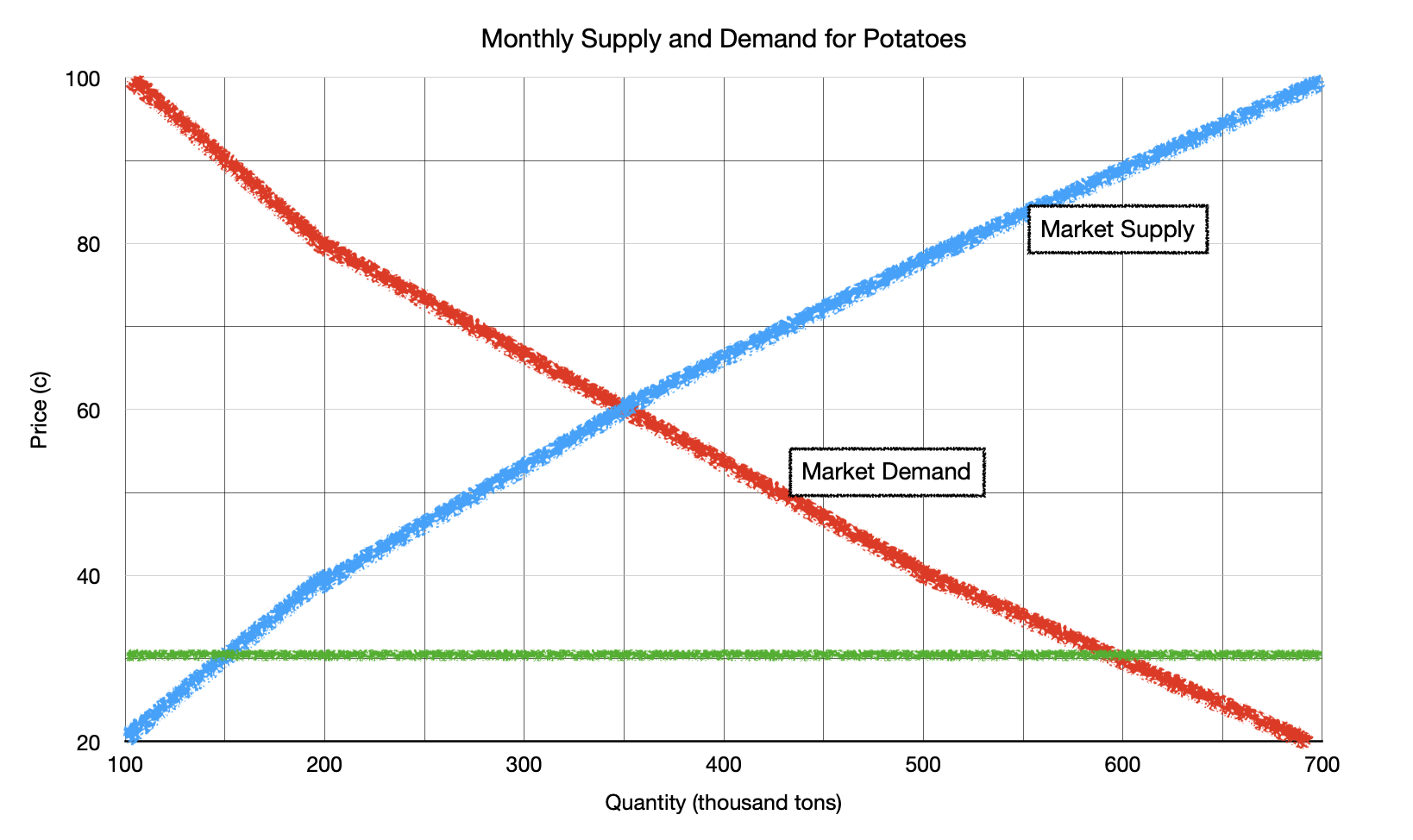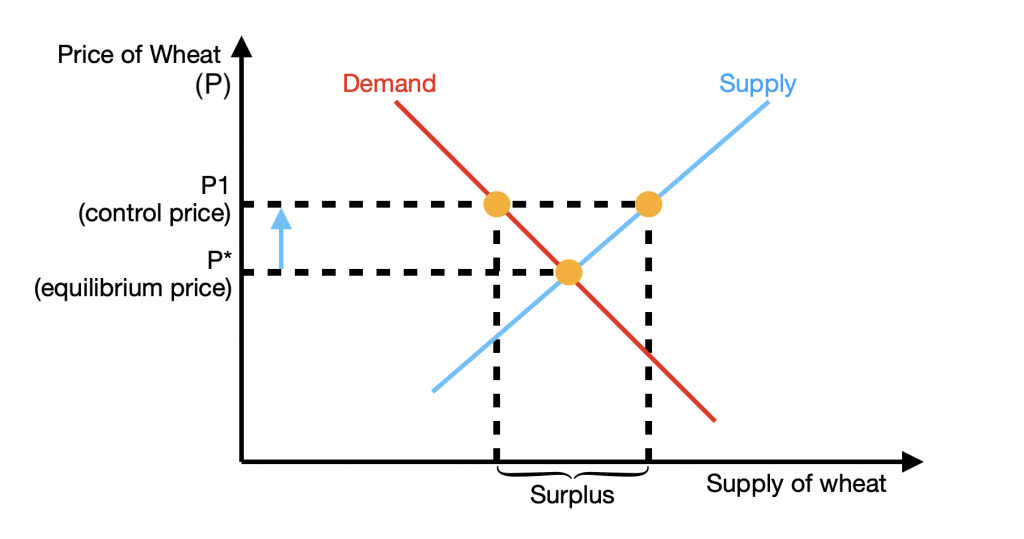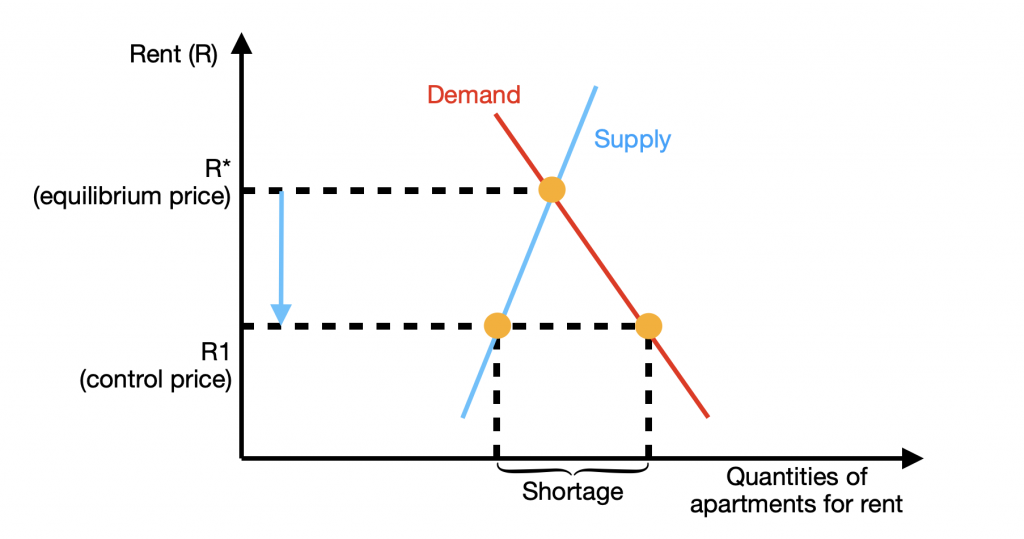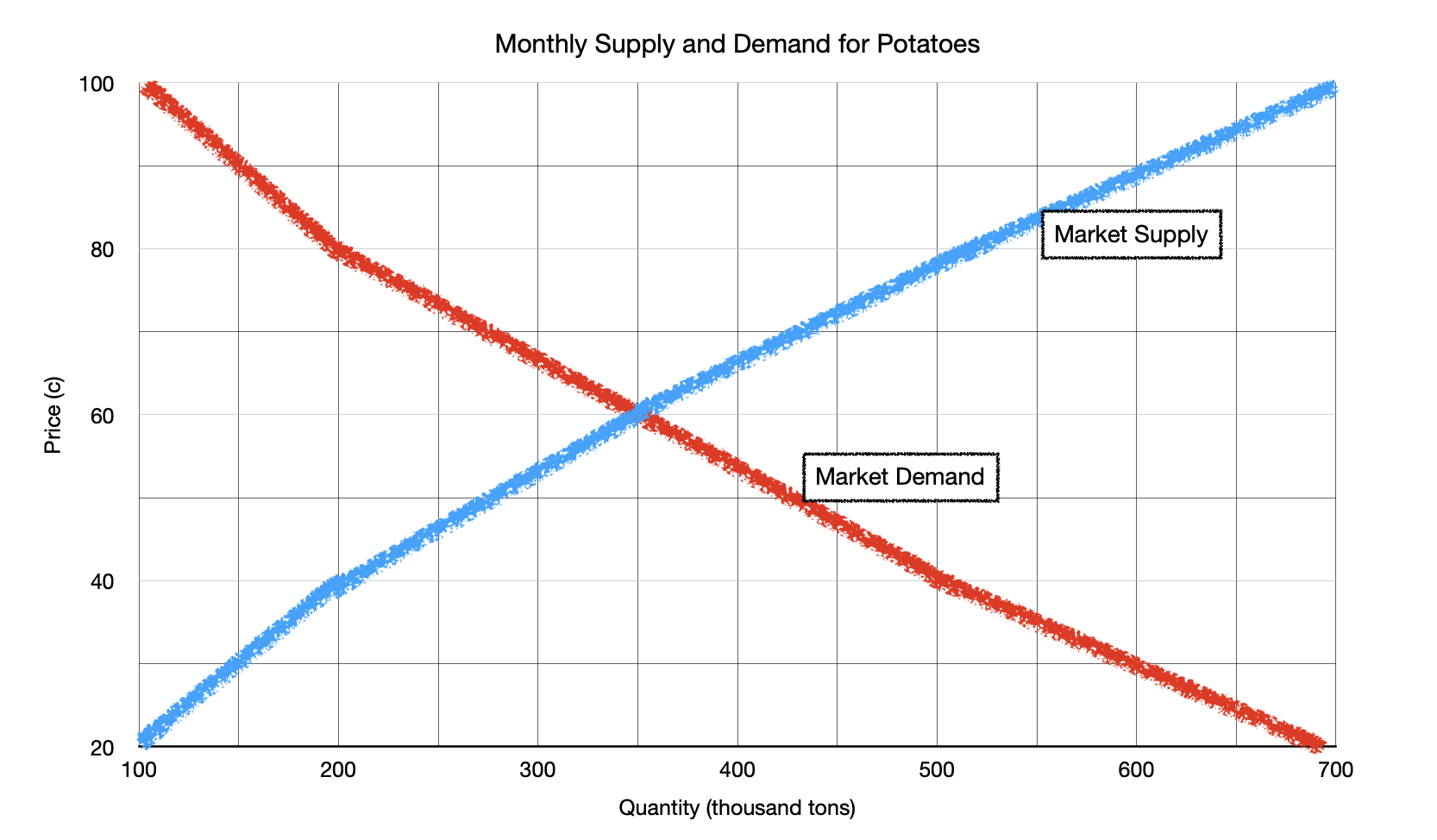Objectifs globaux :
Explain how the competitive market reaches an equilibrium situation in which the agents are the price takers
Objectifs travaillés :
Understanding how the equilibrium price is found, brief modifications to the equilibrium price
Resources :
Video: Rotterdam Shell station
PDF: Fixing an equilibrium price
PDF: The consequences of price controls
PDF: Séance 4 evaluation
Contents
Activité 1
A non-fixed price at the station
Watch the video and get ready to answer some questions.
In this station, the price is not fixed by the day, but changes every hour thanks to software that applies the law of supply and demand in real time.
The software analyses the attendance in the station, the fuel volume purchased by each customer. We can imagine that it also counts the day of the week and the moment of the day, the current weather …
Probably relatively high
Probably relatively low
Activité 2
Fixing an equilibrium price (applying the law of supply and demand)


If the price is 30c, Qo=150 and Qd=600. There is a shortage in the market.
In the event of a shortage, when the quantities requested exceed the quantities offered, certain consumers will overbid and an increase in prices will persist. Due to the « law of supply and demand » and competition between offerers and between applicants, prices will converge to the value that allows equalising quantity offered and quantity requested.
The price of 60 cents is qualified as a balance price as, at this price, the quantities offered are equal to the quantities requested (QD = Qo = 350). This equality can be explained by the law of supply and demand and the game of competition.
It can be explained by reasoning this situation: if, for example, for a given price, the quantities offered are bigger than quantities requested, companies will have to compete and sell at a discount, which will lead some of them to reduce production, or retire from the market, this decrease in price will encourage consumers to demand larger quantities. This process will continue as long as an imbalance remains.
It can therefore be affirmed that “at equilibrium, supply (more precisely, « the quantities supplied ») is equal to demand (specifically, » to the quantities demanded « ).
Activité 3
Controlling the price

If the state imposes a floor price on wheat, for example, at a price above market equilibrium, there will be excess supply. The state will either have to buy the surplus, stockpile it or dispose of it in some way or another, or limit production.

Rent control laws place limits on the rents that apartment owners can charge their tenants. If these rents are limited to R1, below the market equilibrium level R*, there will be excess demand.
Because, at the market price, the quantity demanded is less than the quantity supplied.
Because, at the market price, the quantity demanded is greater than the quantity supplied.
Evaluation
Answer questions about this lesson.
How does a competitive market work? – Séance 4
Quiz Summary
0 of 15 questions completed
Questions:
- 1
- 2
- 3
- 4
- 5
- 6
- 7
- 8
- 9
- 10
- 11
- 12
- 13
- 14
- 15
Information
You have already completed the quiz before. Hence you can not start it again.
Quiz is loading...
You must sign in or sign up to start the quiz.
Vous devez d’abord complété le suivant :
Résultats
Résultats
0 of 15 questions answered correctly
Your time:
Temps écoulé
You have reached 0 of 0 point(s), (0)
Earned Point(s): 0 of 0, (0)
0 Essay(s) Pending (Possible Point(s): 0)
| Score moyen |
|
| Votre score |
|
Catégories
- Pas classé 0%
-
Zut !
On dirait que vous devez vous entraîner un peu plus. Pourquoi ne pas revenir à la leçon et, quand vous êtes prêt, recommencer le quiz ?
-
Dommage !
Vous n’étiez pas loin de réussir ce quiz. Vous pouvez recommencer le quiz ou d’abord voir où vous vous êtes trompé.
-
Bien joué !
Vous n’étiez pas loin d’obtenir 100% ! Vous pouvez essayer à nouveau le quiz pour obtenir un score parfait, ou passer à la section suivante.
-
Félicitations !
Vous avez eu 100% sur ce quiz !
- 1
- 2
- 3
- 4
- 5
- 6
- 7
- 8
- 9
- 10
- 11
- 12
- 13
- 14
- 15
- Répondu
- Révision
-
Question 1 de 15
1. Question
At the petrol station in the video, how would you describe the price on a busy day?
ExactInexact -
Question 2 de 15
2. Question
… and on a cold quiet night?
ExactInexact -
Question 3 de 15
3. Question
What law does the petrol station apply?
ExactInexact -
Question 4 de 15
4. Question
What factor does the petrol station NOT take into account?
ExactInexact -
Question 5 de 15
5. Question
On a graph, what is the Y data also called?
ExactInexact -
Question 6 de 15
6. Question
On a graph, what is the X data also called?
ExactInexact -
Question 7 de 15
7. Question
What happens when supply = demand?
ExactInexact -
Question 8 de 15
8. Question
What happens when supply < demand?
ExactInexact -
Question 9 de 15
9. Question
What happens when supply > demand?
ExactInexact -
Question 10 de 15
10. Question
What is a price ceiling?
ExactInexact -
Question 11 de 15
11. Question
What is a price floor?
ExactInexact -
Question 12 de 15
12. Question
What happens when the price floor is above the equilibrium price?
ExactInexact -
Question 13 de 15
13. Question
What happens when the price floor is below the equilibrium price?
ExactInexact -
Question 14 de 15
14. Question
What happens when the price ceiling is above the equilibrium price?
ExactInexact -
Question 15 de 15
15. Question
What happens when the price floor is below the equilibrium price?
ExactInexact
